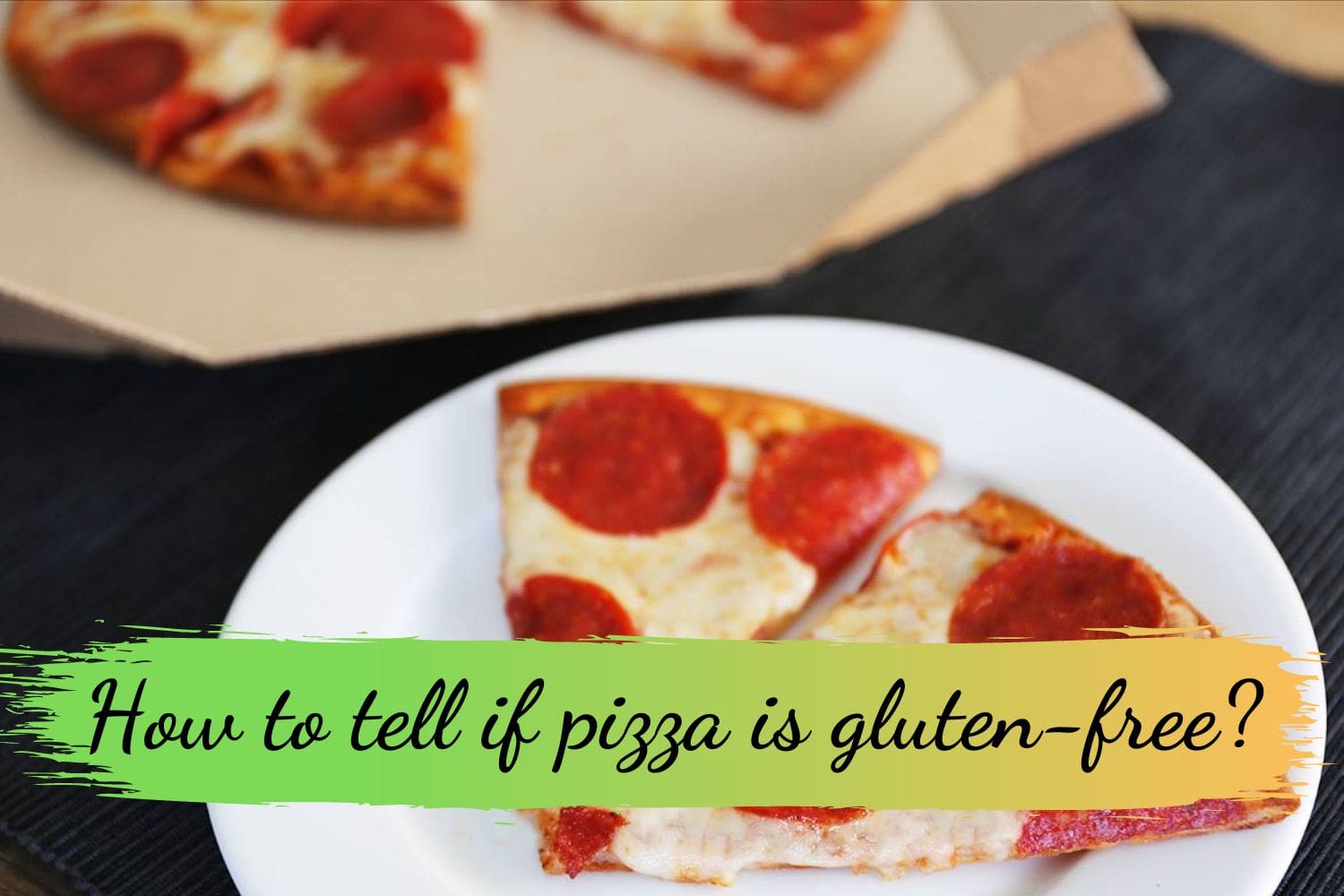How to tell if pizza is gluten-free?

Do you have a sensitivity to gluten and need to ensure that your pizza is gluten-free? For many with celiac disease or other food allergies, it can be difficult to tell if the pizza they are ordering is truly gluten-free. We’re here to make that easier for you!
So, How to tell if pizza is gluten-free?
Traditional pizzas feature a thick, chewy crust with the perfect amount of crispiness. On the other hand, gluten-free pizza provides an alternative option using different flours to create a thinner and crisper feel. Enjoy all these delicious variations!
In this blog post, we’ll discuss how to determine if the pizza you’re about to enjoy contains any trace of gluten so you don’t have to worry about experiencing symptoms of a reaction or flare-up. With our tips and suggestions, you’ll never again have to worry about whether or not your pizza is safe for consumption. Read on and get prepared for an entirely enjoyable pizza experience!
How To Tell If Pizza Is Gluten-Free
If you’re unsure if the pizza you’re ordering is gluten-free, look for a few key indicators. The first step is to ask the restaurant or pizzeria if their pizzas are made with wheat flour or other ingredients containing gluten. If they answer yes, then it’s best to avoid ordering that particular pizza and instead seek out a different option.
You can also do a quick check at home by taking a small slice of pizza and looking at the crust. Gluten-free crusts will tend to be thinner and crispier than regular dough; while traditional dough will have more thickness and chewiness. Lastly, if any visible toppings don’t appear to be gluten-free (such as breadcrumbs), it’s a good idea to double-check with the restaurant or pizzeria before consuming.
What Are The Differences Between Gluten-Free and Regular Pizza?

Crust
When it comes to pizza, the type of crust is a major differentiator between regular and gluten-free options. Gluten-free pizzas are typically slightly thinner than traditional ones, with some being made from alternative flours that add a unique flavor profile. To ensure these alternatives stay wheat-free, dedicated tools and clean surfaces should be used during preparation; in addition, your hands washed and gloves changed before handling each one’s special ingredients!
Additionally, some gluten-free pizzas may require additional cooking time as well to ensure that it’s cooked all the way through.
Have you heard the buzz about wheat starch pizza crusts? This European favorite is becoming more popular in the United States. While it doesn’t give a doughy elasticity, its unique texture and subtle wheat-like taste are winning hearts (and taste buds!).
For those seeking a healthier option when it comes to pizza, look no further than Gluten-Free Crust. This popular alternative is made with rice flour, rice starch, and potato starch; containing less than 20ppm of gluten – making your favorite pizzas safe to consume regardless of dietary restrictions! And although wheat-based pizza doughs have an elasticity that the gluten-free variety doesn’t quite reach yet – they more than makeup for this in texture and flavor.
To enjoy gluten-free pizza without the worry of consuming too many calories, read food labels carefully and limit your intake to one or two slices. Making simple dietary decisions like adding vegetables can also increase fiber and nutrient content while significantly reducing calorie consumption from traditional pizza toppings.
As a growing trend in today’s culinary landscape, diners need to be aware that alternative flours used for gluten-free crusts tend to have higher caloric levels than wheat-based counterparts; however, with mindful consideration, you can still get all the pleasure of indulging in an occasional slice – guilt free!
Carbs
Gluten-free options are a great way to reduce your intake of carbohydrates while also enjoying pizza. However, it is important to remember that these pizzas usually contain alternative flours which can carry higher carbohydrate counts than wheat flour.
Additionally, elements like cheese and meat can further increase the carb content so it’s essential you know what ingredients are being used when selecting gluten-free pizza.
Despite containing more fat, calories, and sodium than other foods – with mindful portioning and ingredient selection – gluten-free pizza still makes for an excellent health choice! Going gluten-free not only improves digestion but may lower cholesterol levels as well – making this dietary shift both beneficial for overall well-being & delicious too!
Toppings For Gluten-Free Pizza
Enjoy the antioxidant-rich and fiber benefits of adding vegetables to your gluten-free pizza.
For added flavor, you can still enjoy meat toppings like sausage or pepperoni; however, be aware that it will add more calories and saturated fat content compared with a veggie topping.
Gluten-free crust pizzas offer an enjoyable alternative to traditional pizzas as they are made with less common ingredients such as rice flour, almond flour, or potato starch which provide a different texture than regular crusts – chewy but without any wheat-based gluten.
Conclusion
All in all, when it comes to determining if pizza is gluten-free, it can be quite tricky. If you have gluten sensitivity or intolerance, it’s best to speak with the pizza shop and inquire about the ingredients used to make the product. They should communicate whether their pizza contains gluten and if they have any options for enjoying a gluten-free experience.
It’s also important to practice portion control as some pizzas may contain trace amounts of gluten. When in doubt, opt for a crust-less pizza or grilled vegetables instead! Remember these tips when next looking for a safe and delicious way to indulge in everyone’s favorite comfort food – pizza!
If you want to know more information, visit our website here.
References:
How is gluten-free pizza made?
I’m Vance Douglas, and I love making pizza. In fact, I love it so much that I decided to build my own oven to make it in. It’s a brick oven that I made myself, and it’s the best pizza oven you’ll ever find.
Making pizza is a passion of mine, and I’m always looking for new ways to make it even better. I’ve been making pizza for years, and I continue to learn more about the art every day. My goal is to create the perfect pizza, and I’m getting closer and closer every time.



